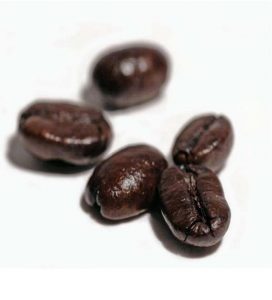By Vivian Molick from the August 2010 Edition
Coffee is a widely consumed beverage prepared from the roasted seeds commonly called “beans” of the coffee plant. The popularity of coffee products has a universal appeal to people of different income levels, ethnicities, and religions. While many of us enjoy it each morning, we know very little about coffee facts – like where a coffee bean comes from.
Coffee was first consumed as early as the 9th century, when it appeared in the highlands of Ethiopia. According to legend, shepherds were the first to observe the influence of the caffeine in coffee beans when, after their goats consumed some wild coffee berries in the pasture, the goats appeared to “dance” and have an increased level of energy. The goat herders tasted the berries and found that they had more energy as well! At first the berries were eaten, as the coffee bean was considered a food. Ethiopian tribesmen would mix the coffee berries with animal fat, roll them into balls, and eat them on their nomadic journeys. From Ethiopia, it spread to Egypt and Yemen, and by the 15th century had reached Persia, Turkey, northern Africa, and then Italy.
From there it spread to the rest of Europe and the Americas. Coffee is grown in over fifty-three countries worldwide, all of them located near the equator between the tropic of Cancer and Capricorn. Brazil is the largest coffee producing region, with around 30% of total world output of coffee. Many varieties of the coffee plant exist, but only two are commonly cultivated: the Arabica, and the Robusta. The Arabica is considered to be the best quality because of its smooth taste and aromatic qualities, but can only be grown above an altitude of 2000 feet, while the Robusta can grow below. In one year, the average yield from a single tree is approximately one roasted pound of coffee.
Coffee cherries usually contain two beans, except for the single pea berry anomaly. The pea berry is considered the ‘caviar’ of coffees in some regions, while other regions discard the pea berry as below-grade product.
It takes three to five years for a coffee tree to reach maturity and has a lifespan of about 50 to 70 years. The coffee berries turn from yellow to orange and then bright red, 6 – 8 months after flowering. When it is in bloom, the coffee tree is covered with 30,000 white flowers which begin to develop into fruit after 24 – 36 hours. A coffee tree can flower eight times in any one year – depending on rainfall.
Coffee berries and their seeds undergo multi-step processing before they become the roasted coffee most Western consumers are familiar. First, coffee berries are picked, generally by hand.
Then, the flesh of the berry is removed and the seeds are fermented. When the fermentation is finished the beans are washed with fresh water to remove the fermentation residue. Finally the seeds are dried and sorted.
The next step in the process is the roasting of the green coffee. The roasting process has a considerable degree of influence on the taste of the final product by changing the coffee bean both physically and chemically. During roasting, caramelization occurs as the intense heat breaks down starches in the bean, changing them to simple sugars which begin to brown, adding color to the bean. As the bean roasts, aromatic oils, acids and caffeine weaken, changing the flavor. When the internal temperature of the bean reaches 205°C (400°F) other oils start to develop, one being caffeol, which is largely responsible for coffee’s aroma and flavor. A small amount of chaff is produced during roasting from the skin left on the bean after processing. Chaff is usually removed, though a small amount is added to dark roast coffees to soak up oils on the beans. Decaffeination may also be part of the processing that coffee seeds undergo. Decaffeination is often one by processing companies, and the extracted caffeine is usually sold to the pharmaceutical industry. One kilogram of roasted coffee requires 4,000 – 5,000 coffee beans.
Today, coffee is one of the world’s most important primary commodities; being the second most traded product in the world after petroleum. It is predicted that in 2010 production will rise to 7 million tons per year, with the coffee market earning nearly sixty billion dollars annually.

Download the full edition or view it online




You must be logged in to post a comment.